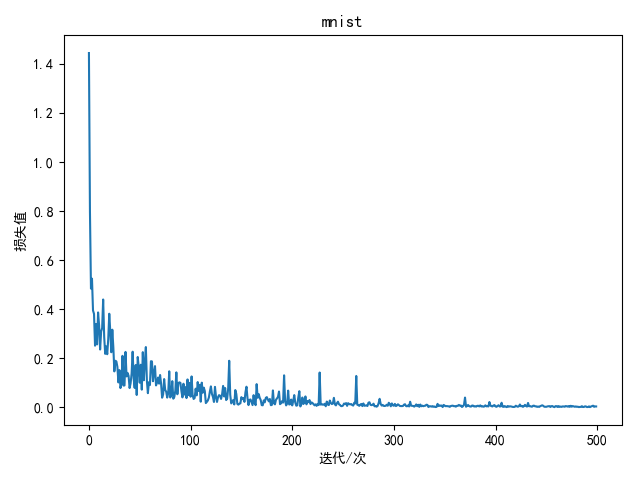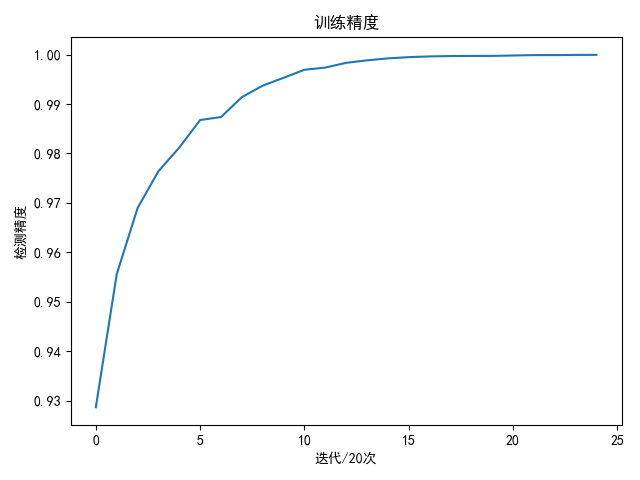1
2
3
4
5
6
7
8
9
10
11
12
13
14
15
16
17
18
19
20
21
22
23
24
25
26
27
28
29
30
31
32
33
34
35
36
37
38
39
40
41
42
43
44
45
46
47
48
49
50
51
52
53
54
55
56
57
58
59
60
61
62
63
64
65
66
67
68
69
70
71
72
73
74
75
76
77
78
79
80
81
82
83
84
85
86
87
88
89
90
91
92
93
94
95
96
97
98
99
100
101
102
103
104
105
106
107
108
109
110
111
112
113
114
115
116
117
118
119
120
121
122
123
124
125
126
127
128
129
130
131
132
133
134
135
136
137
138
139
140
141
142
143
144
145
146
147
148
149
150
151
152
153
154
155
156
157
158
159
160
161
162
163
164
165
166
167
168
169
170
171
172
| # -*- coding: utf-8 -*-
# @Time : 19-5-18 下午3:03
# @Author : zj
import torch
import torch.nn as nn
import torch.nn.functional as F
import torch.optim as optim
from torchvision import datasets
import torchvision.transforms as transforms
from torch.utils.data import DataLoader
import time
import copy
import matplotlib.pyplot as plt
import warnings
warnings.filterwarnings('ignore')
# 批量大小
batch_size = 256
# 输入维数
D = 784
# 隐藏层大小
H1 = 200
H2 = 60
# 输出类别
K = 10
# 学习率
learning_rate = 1e-2
# 迭代次数
epoches = 500
def load_data(batch_size=128, shuffle=False):
data_dir = '../data/'
transform = transforms.Compose([
transforms.Grayscale(),
transforms.ToTensor(),
transforms.Normalize(mean=(0.5,), std=(0.5,))
])
train_data_set = datasets.MNIST(root=data_dir, train=True, download=True, transform=transform)
test_data_set = datasets.MNIST(root=data_dir, train=False, download=True, transform=transform)
train_loader = DataLoader(train_data_set, batch_size=batch_size, shuffle=shuffle)
test_loader = DataLoader(test_data_set, batch_size=batch_size, shuffle=shuffle)
return train_loader, test_loader
def compute_accuracy(module, dataLoader, device=torch.device('cpu')):
"""
计算精度
:param module: 计算模型
:param dataLoader: 数据加载器
"""
accuracy = 0
for i, items in enumerate(dataLoader, 0):
data, labels = items
data = data.reshape((data.size()[0], -1))
data, labels = data.to(device=device), labels.to(device=device)
scores = module.forward(data)
predictions = torch.argmax(scores, dim=1)
res = (predictions == labels.squeeze())
accuracy += 1.0 * torch.sum(res).item() / scores.size()[0]
return accuracy / dataLoader.__len__()
def draw(loss_list, title='损失图', ylabel='损失值', xlabel='迭代/20次'):
plt.title(title)
plt.ylabel(ylabel)
plt.xlabel(xlabel)
plt.plot(loss_list)
plt.show()
class NNModule(nn.Module):
def __init__(self):
super(NNModule, self).__init__()
self.fc1 = nn.Linear(D, H1)
self.fc2 = nn.Linear(H1, H2)
self.fc3 = nn.Linear(H2, K)
def forward(self, input):
x = F.relu(self.fc1(input))
x = F.relu(self.fc2(x))
x = F.log_softmax(self.fc3(x))
return x
def __copy__(self, device):
module = NNModule().to(device=device)
module.fc1.weight = copy.deepcopy(self.fc1.weight)
module.fc1.bias = copy.deepcopy(self.fc1.bias)
module.fc2.weight = copy.deepcopy(self.fc2.weight)
module.fc2.bias = copy.deepcopy(self.fc2.bias)
module.fc3.weight = copy.deepcopy(self.fc3.weight)
module.fc3.bias = copy.deepcopy(self.fc3.bias)
return module
def compute_gradient_descent(batch_size=8, epoches=2000):
train_loader, test_loader = load_data(batch_size=batch_size, shuffle=True)
device = torch.device("cuda:0" if torch.cuda.is_available() else "cpu")
# softmax模型
module = NNModule().to(device=device)
# 损失函数
criterion = nn.NLLLoss().to(device=device)
# 优化器
optimizer = optim.SGD(module.parameters(), lr=learning_rate)
loss_list = []
accuracy_list = []
bestA = 0
bestModule = None
batch_len = train_loader.__len__()
for i in range(epoches):
start = time.time()
for j, items in enumerate(train_loader, 0):
data, labels = items
data = data.reshape((data.size()[0], -1))
data, labels = data.to(device=device), labels.to(device=device)
scores = module.forward(data)
loss = criterion(scores, labels.squeeze())
optimizer.zero_grad()
# 反向传播
loss.backward()
# 梯度更新
optimizer.step()
if j == (batch_len - 1):
loss_list.append(loss.item())
end = time.time()
print('epoch: %d time: %.2f s' % (i + 1, end - start))
if i % 20 == 19: # 每个20次进行一次检测
start = time.time()
accuracy = compute_accuracy(module, train_loader, device)
accuracy_list.append(accuracy)
if accuracy >= bestA:
bestA = accuracy
bestModule = module.__copy__(device)
end = time.time()
print('epoch: %d time: %.2f s accuracy: %.3f %%' % (i + 1, end - start, accuracy * 100))
draw(loss_list, title='mnist', xlabel='迭代/次')
draw(accuracy_list, title='训练精度', ylabel='检测精度', xlabel='迭代/20次')
test_accuracy = compute_accuracy(bestModule, test_loader, device)
print('best train accuracy is %.3f %%' % (bestA * 100))
print('test accuracy is %.3f %%' % (test_accuracy * 100))
if __name__ == '__main__':
start = time.time()
compute_gradient_descent(batch_size=batch_size, epoches=epoches)
end = time.time()
print('all train and test need time: %.2f minutes' % ((end - start) / 60.0))
|

